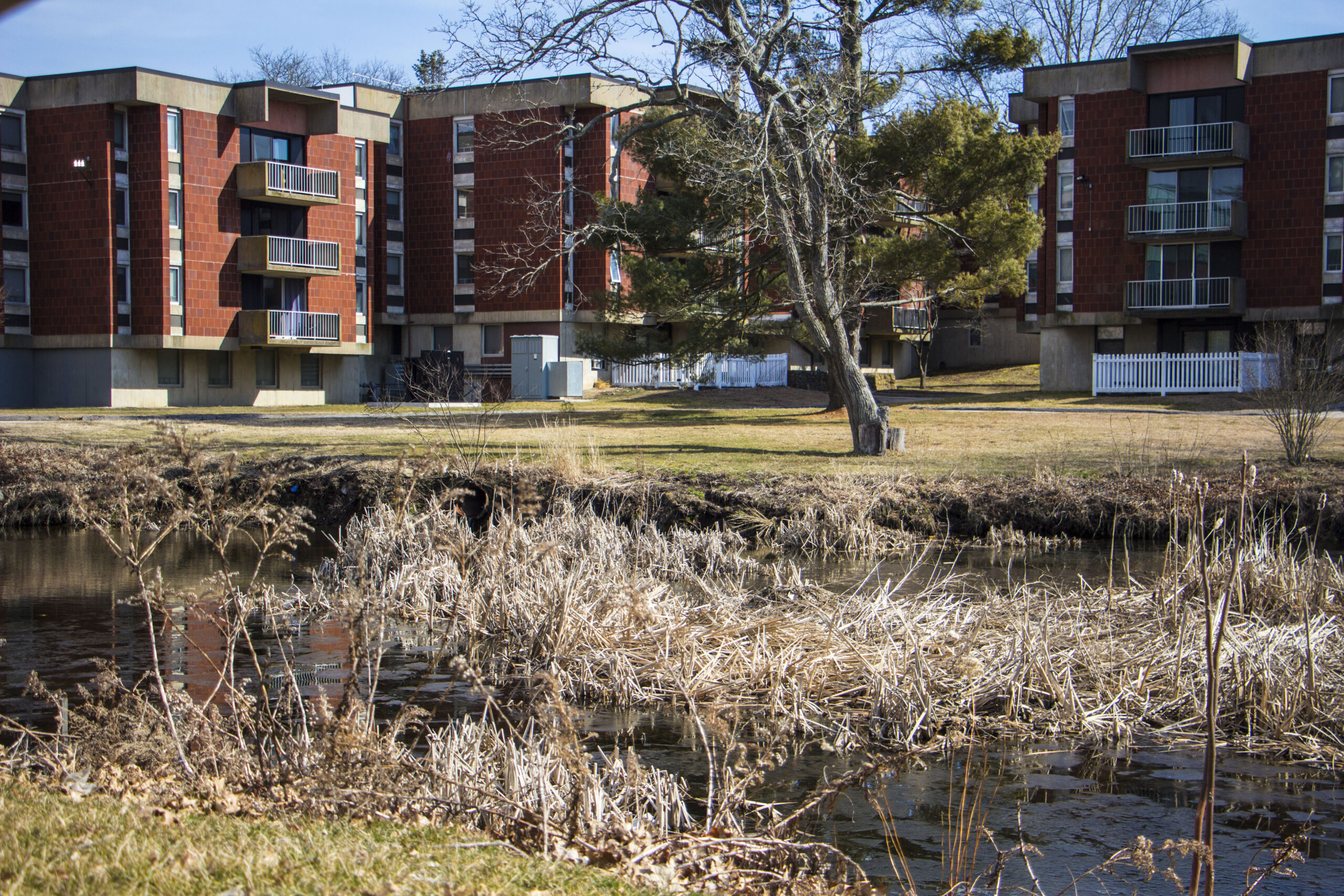Warm weather has allowed certain invasive plant species to survive the winter which has affected water quality. Photo by Greg Clark.
Last February was one of New England’s warmest, leading to major negative effects for the University of Rhode Island’s local watershed area.
Elizabeth Herron, director of the URI Watershed Watch Program, explained that a watershed is a land area that drains to a body of water. Watersheds can have major impacts on local communities.
“Here at URI, we’re in the Wood-Pawcatuck Watershed, which means that all of the land here eventually water-drains to the Pawcatuck River, which eventually drains all the way to Narragansett Bay and [the] Long Island Sound,” Herron said.
The Wood-Pawcatuck Watershed covers most of non-coastal Washington County, according to the Wood-Pawcatuck Watershed Association. It also stretches into West Greenwich and some parts of southeastern Connecticut.
This past winter, as well as the one before it, affected the quality of the Wood-Pawcatuck Watershed. Weather. Temperature influences chemical processes and the food chain more than anything else, and the last few winters have been warmer than usual.
“Algae that normally would die off over the winter and wait until a certain temperature to grow are going to start [growing] earlier,” said Herron. “If we shift the algae species to an earlier part of the season, and the animals that depend on them don’t start reproducing, or, if they’re migratory, don’t show up until later in the season, their primary food sources have already gone by.”
The same nutrients used to upkeep lawns and gardens can make the water stream less desirable, according to Herron. Examples of ecological indicators that the Watershed Watch tracks besides nutrients include the amount of algae in the water, water temperature, chlorophyll and the healthiness of local aquatic species.
As climate change and weather patterns become more severe, it is likely that patterns such as irregular hibernation cycles will continue. In addition to disrupting the food chain, a warmer winter means increased productivity among species that would migrate or hibernate in colder weather, using up more resources within the water and using nutrients differently.
Warmer winters are also not good news for local ponds, which may look a murkier shade of green more often instead of a pristine, reflective blue.
This is caused by cyanobacteria, which throughout the warmer winter, has had more of a chance to multiply and be active. These increased “blooms,” as they are known, lead to water being a “yucky shade of green,” according to Herron, which in some cases can be harmful.
This can also lead to a declining economy in some areas with cyanobacteria-filled ponds, as Herron explained.
“We know, historically, there are property tax implications,” she said. “If you’re near a green, yucky lake instead of a beautiful lake in your backyard, your property value will probably go down.”
Kelly Addy, a watershed hydrologist at URI works within the role of scientific communication and runs the Watershed Watch website. Addy explained that the Watershed works with private citizens and other associations across Rhode Island.
“The program is called Watershed Watch because while we are monitoring individual water bodies like a lake or a pond or a riverside, what we’re really trying to understand is not only what the condition of that water body is but also what’s contributing to that condition,” Herron said.
By helping people understand the conditions of these watersheds, Herron hopes that she and Watershed Watch can help communities understand what they can do to help keep the water cleaner.
Watershed Watch, according to Herron, is an organization with a very wide range of volunteers doing work checking local ponds.
“[The volunteers] are a very broad range of people. We have everything from middle schoolers on up to people who are approaching their ninth decade,” Herron said. “Most of them do not have any kind of a scientific background; most folks who volunteer are interested [in learning more.]”
These volunteers, though without scientific background, are dedicated and intent on doing a good job, according to Addy.
“They want their data to be useful and they really pay attention,” Addy said.
Over the spring, Watershed Watch is going to try to introduce some video training and enhance their training.
The University is also engaging in measures to help reduce cyanobacteria levels locally and have a small impact on the climate, according to Herron.
“URI’s trying really hard to mitigate its impact, which is nice to see,” Herron said.
Rhode Island is also home to the Narragansett Bay Watershed, which covers the rest of the state and stretches up to Worcester, Massachusetts in the north and Middleboro, Massachusetts in the east.
There is no data available yet for how this past month matches up against those on record in Rhode Island. Research by the Boston Herald, however, found that the average temperature in the greater Boston area throughout February, 38.1 degrees Fahrenheit, is tied for the warmest February on record.





